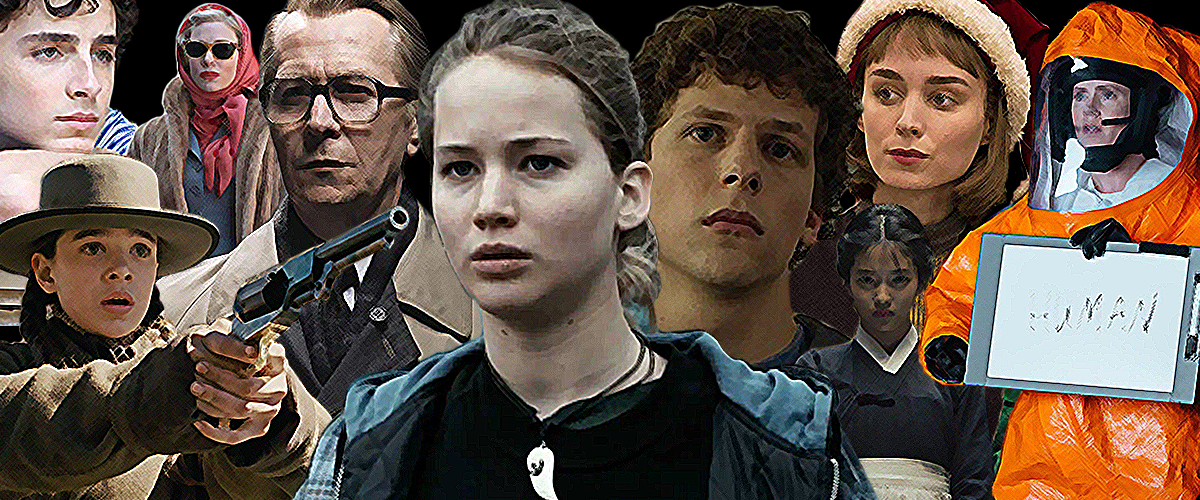
The 10 Best Literary Film Adaptations
of the Decade
And then some.
As you may have noticed, over the past few weeks, we’re been looking back at the best books from the decade, from novels to poetry to nonfiction. As a sort of coda to that project, I’ve also polled the staff about their favorite literary adaptations of the decade, on both the big and small screens. Earlier this week, we published our list of the best television adaptations of the decade, and now, as promised, I present our list of the decade’s best films adapted from books.
Take note that we attempted to judge the films in question on their own independent merits; while many of us have read the books these shows are based on, we didn’t base our decisions on fidelity to, or creativity of departure from, the original text. We just wanted to pick the best movies.
As with the previous lists, the top ten big screen adaptations were chosen after a lengthy debate among the Literary Hub staff. It got testy, but in the end, we agreed—though many of us had to include our dissenting opinions at the end of the list. If we’ve missed your favorite, tell us why we’re wrong in the comments.
***
The Top Ten
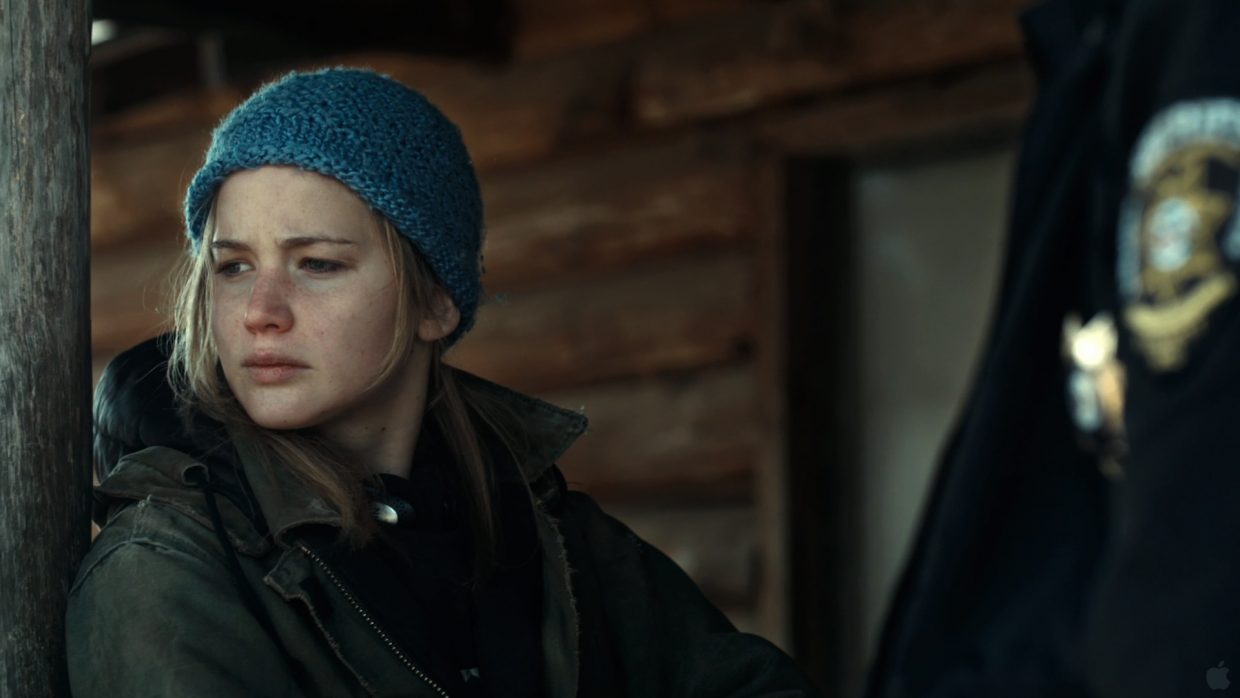
Winter’s Bone (2010)
Based on: Winter’s Bone by Daniel Woodrell (2006)
Debra Granik’s Winter’s Bone (which she also co-wrote with producer Rosellini) is a beautiful, gritty, horrifying masterpiece. Based on the novel by Daniel Woodrell and released in 2010, it is the story of a teenage girl named Ree (Jennifer Lawrence, before her rise to fame and giving the best performance of her career) who lives in the Ozark Mountains with her mother and younger siblings. She serves as the primary caretaker for her whole family—her drug-dealing father has disappeared, and her mother suffers from mental illness. When her family is threatened with eviction, she decides to track down her father. But the neighbors are resistant to her attempts to pry into her father’s life—and she is emphatically discourages by her uncle, a conflicted meth addict named Teardrop (John Hawkes) from searching any further. It is a brutal, cutting film—its pacing is incredibly suspenseful and the acting (often stony), is pitch-perfect. It is a movie of silence, of snow—muted sounds and colors. Until it isn’t, and it transforms into a shocking, scarring, and vibrant spectacle of horror. Debra Granik should direct every movie.
–Olivia Rutigliano, CrimeReads Editorial Fellow
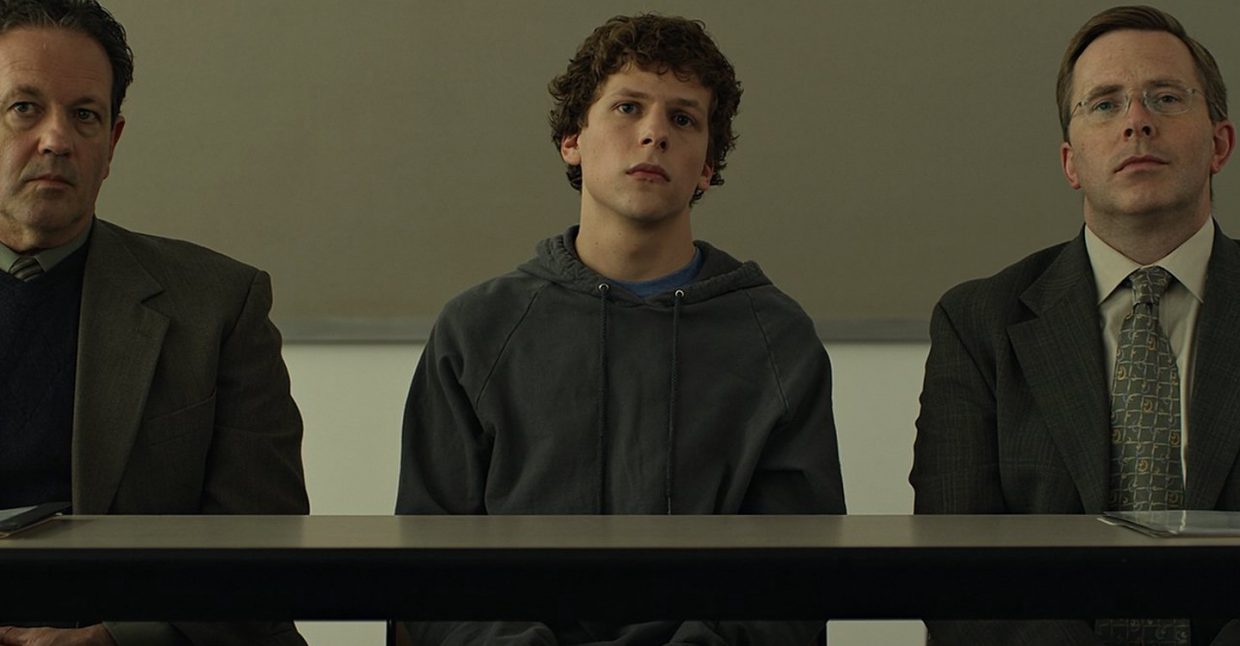
The Social Network (2010)
Based on: The Accidental Billionaires by Ben Mezrich (2009)
It’s not going to surprise anyone that David Fincher is has a prominent place on a list like this. His 2014 adaptation of Gillian Flynn’s Gone Girl claims one of the spots in the top 10. His 2011 The Girl with the Dragon Tattoo very easily could have made it, too—it was arguably one of the most anticipated adaptations in several decades, and despite a lukewarm critical reception at the time has been aging pretty well into something closer to wide acclaim. Mindhunter gets a nod in the TV department. But the real crowning achievement of Fincher’s impressive decade is the one with no killers, no gore, and no brooding violence at all, really, except the violence done to the American social fabric thanks to the rise of a new class of reckless tech billionaires. Somehow, with its dark campus landscapes, Trent Reznor score, and unabashed displays of ambition, The Social Network turns out to be one of Fincher’s most insidious, disturbing works. The adaptation, from Ben Mezrich’s 2009 book, The Accidental Billionaires, was done by none other than Aaron Sorkin, and like Mezrich’s book, the screenplay zeroes in on the lawsuits filed by the various founders and early developers of Facebook. Depositions have never been captured so perfectly on film, with Jesse Eisenberg as the seething anti-hero, Zuckerberg, facing off against rivals, enemies, and himself. Looking back almost ten years later, it’s incredible just how prescient The Social Network was about the principles and players behind social media. Fincher and Sorkin seemed to see clearly the insecurities and threats behind this strange force.
–Dwyer Murphy, CrimeReads Managing Editor

True Grit (2010)
Based on: True Grit by Charles Portis (1968)
True Grit, directed by Joel and Ethan Coen in 2010, is the second adaptation of Charles Portis’s 1968 novel of the same name. The first one, which was made in 1969 and starred John Wayne (in the November of his career), was a chipper, watered-down version of the original story, a vehicle for Wayne to pastiche his whole career as a crochety, no-nonsense cowboy. Wayne won an Oscar (kind of as a tribute) for his role as the crapulent, cantankerous, eye-patch-wearing U.S. Marshall Rooster Cogburn, forever associating himself and his legend with the film. The Coen Brothers’ retelling of the story fully (productively) ignores that the first True Grit even happened, drawing its script from Portis’s grim novel, to focus more on the protagonist that the first film dismissed: Mattie Ross, a formidable fourteen-year-old girl who arrives in a small town to retrieve the body of her murdered father. Played to poker-faced perfection by Hailee Steinfeld (and Elizabeth Marvel, later on), Mattie hires Rooster (Jeff Bridges, who has in the last two decades found his calling playing sloppy, insouciant older men) to hunt down and take into custody Tom Chaney (Josh Brolin), her father’s murderer. Also along for the ride is a patronizing Texas Ranger named LeBoeuf (Matt Damon, who pronounces it “luh beef”). While the film is structured around the hunt for the killer, it is more about the relationships between the three characters on the journey—or, really, the lack of relationships between them. The film eschews the traditional “it’s the journey, not the destination” cliché of so many expedition-focused stories—the yearning for a connection between them is there, but they are not able to bring it to fruition.
But this is a Western, which means that the relationships that form are not limited to humans. Mattie’s most loving connection will be to Little Blackie, the shiny horse she picks out for herself to ride on the trip. He will (spoiler) ultimately give up his life to save hers, carrying her to medical care after an accident. Horses in True Grit, seem to play a particularly large role in the film’s construction of a moral hierarchy and are represented as providing integrity to an otherwise cold and chaotic world. As emblematized most obviously by the strutting, gauche Rooster, the wild west of True Grit turns everything and everyone into animals. As Mattie (her family’s breadwinner, now) tries to avenge her father, she is truly on the hunt for humanity and support—someone who can help her carry her family through this hard time. But humans, with their nominal superiority of morality and thought, will almost always fail her. And the film beautifully, sadly, darkly, watches humanity leave her with nothing—like the horses who love her back, she too must live as a beast of burden. –Olivia Rutigliano, CrimeReads Editorial Fellow

Tinker Tailor Soldier Spy (2011)
Based on: Tinker Tailor Soldier Spy by John le Carré (1974)
Swedish purveyor of moody, broody atmospherics Tomas Alfredson (Let the Right One In) conjures the beige-hued, ashen-faced world of jaded British spycraft so impeccably in his adaptation of John Le Carré’s seminal 1974 novel that you can almost smell the stale cigarette smoke and flop sweat, feel the scratchy suit fabric and stained shag carpeting. Gary Oldman plays the latest incarnation of Le Carré’s beleaguered-but-deceptively-cunning career intelligence officer George Smiley, here brought out of retirement and tasked with rooting out a Soviet mole in the upper echelons of the secret service. Alongside him is a rogue’s gallery of stony-faced British acting royalty: Colin Firth, Mark Strong, Benedict Cumberbatch, John Hurt, and Tom Hardy, to name but a few. These are men whose emotional lives have been slowly eroded by the grim rituals and moral compromises of service. The whole thing is just so damn bleak, but in a transfixing kind of way. I know that’s a strange argument to make for exalting a film to Best of the Decade status, but Alfredson’s remake is such a fully realized vision that every time I sit down to watch TTSS (usually in the dead of night) I am instantly transported, mesmerized. It’s paradoxical, but there’s something both deeply soothing and deeply unnerving about following Oldman’s stoic, melancholy Smiley through the ruins of this fallen kingdom—a post-Kim Philby landscape of stagnating enmities and vanished idealism.
–Dan Sheehan, Book Marks Editor

The Hunger Games (2012)
Based on: The Hunger Games by Suzanne Collins (2008)
With all due respect to everyone who got really mad at Martin Scorcese for saying superhero movies weren’t art, I don’t think that The Hunger Games is great art—but I do think it’s a great adaptation. Not only does it capture the spirit of the book in all its distinctly YA-flavored but still genuinely frightening glory, but it’s also highly entertaining. This is the kind of movie that I’ll watch any time I see it on a screen—much like a character in The Hunger Games unable to look away from the Hunger Games. For one thing, the casting is impeccable: Stanley Tucci at his campy best as Caesar Flickerman! Woody Harrelson as loveable grump Haymitch Abernathy! Wes Bentley! Remember him from American Beauty? He became a director after all! The director of the Hunger Games! This movie’s montage game is also really strong. I think probably what happened was that the directors gave one overarching note on the screenplay, and that note was “Can this be a montage?” And the answer was often yes! As is the answer to “Should I watch The Hunger Games?” Jennifer Lawrence is also in it.
–Jessie Gaynor, Social Media Editor
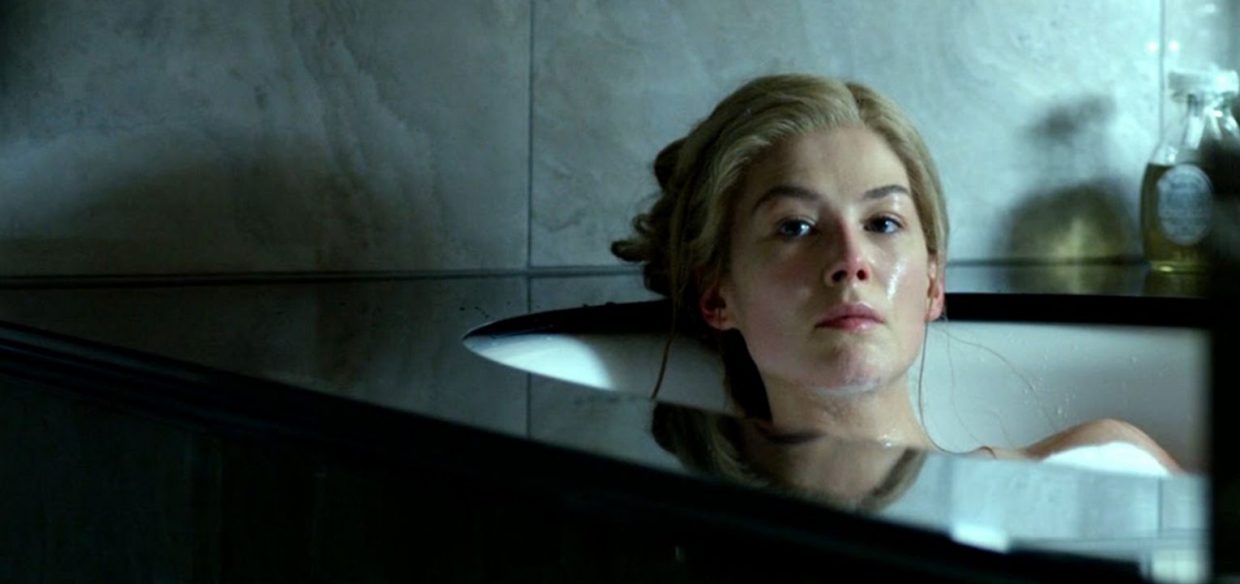
Gone Girl (2014)
Based on: Gone Girl by Gillian Flynn (2012)
Although Gone Girl needs no introduction, here I go anyway. Gone Girl, the movie, was adapted from Gone Girl, the book, first published in 2012 by Gillian Flynn to immediately become a bestseller. Flynn’s Gone Girl went on to sell two million copies in its first year. The psychological thriller, directed by David Fincher—director of every film you’ve heard of, including The Curious Case of Benjamin Button, Seven, Fight Club, Zodiac, The Girl with the Dragon Tattoo—starred Rosamund Pike, Ben Affleck, Neil Patrick Harris, and Tyler Perry (among the producers is also Reese Witherspoon) with Gillian Flynn at the helm, writing the screenplay, and was released to wide critical acclaim in 2014, grossing to $369 million. Meanwhile, Rosamund Pike’s performance as Amy Dunne earned her nominations for an Academy Award, a BAFTA Award, a Golden Globe Award, and a Screen Actors Guild Award. With all the official praise out of the way, now I get to lapse into the story that became a phenomenon.
Gone Girl opens on the day of Amy Dunne’s disappearance, the same day that marks the beginning of the unravelling of her husband Nick Dunne, who is being accused of her murder. In due course, the narrative pulls out from the investigation into Nick Dunne’s culpability and Amy Dunne’s found diary entries, to switch over to Amy, who really, is alive and framing her husband for her murder to punish him for being a bad husband. He is no longer the man she married. The film opens the same way that it closes, with an intimate close up of Amy who is lying down, and staring back at the camera, in a look that should seem affectionate and flirty but instead is unnerving in how ruthless it is. The line Nick speaks over this scene—held too long for comfort—is, “What are you thinking? How are you feeling? What have we done to each other?” These words reverberate throughout the movie only to toll again at the finale.
The film is full of chilling contrasts that augment its tension and reinforce its suspense. Notable is Fincher’s excellent depiction of Gone Girl’s noir aesthetic: evident, for example, in the very dimly lit, empty (albeit in the morning) bar that Nick and Go own, where they play board games while drinking scotch and making light of crude jokes that make one squirm. They also complain about Amy. Excellent in the film is Detective Rhonda Boney: straight-faced, with a southern accent, and a wry humor that disarms New York-endorsed snob Nick just a few minutes into their meeting. A great scene: Nick has just called the police after seeing the living room furniture overturned and the front door ajar, and as procedure requires, Detective Boney evaluates the house; she steps into his bedroom and inquires, casually, about this profession. Nick says he’s a writer. He also owns a bar, named The Bar. “Oh, The Bar,” Boney says, “Love the name. Very meta.” Detective Boney is everything we’ve been taught the crime detective should be, only she is no fool, and she is not arrogant. That is more than we can say about her younger, male lieutenant who is blood-thirsty: he wants Dunne arrested, no matter the evidence. I could go on quite a while about the details of this movie, but the last and very important note I will end on is Amy’s chilling monologue that introduces her true persona to the audience.
Wearing sunglasses and driving with one arm out the window—the arm from which she drew blood to stage a convincing crime scene—Amy is cruising down a country road in the sunlight and we, at this point, know what she did. Here, she gives her iconic “cool girl speech,” the speech that makes a convincing case for the adage, “Hell hath no fury like a woman scorned.” The beauty of the speech is that it is dramatic, dripping with anger and, even though we know Amy is a psychopath, and we know we would never take things that far . . . . yet, there’s a flash of a second where we—the audience—nod along and say, yes. Yes. After praising it so highly, it would be cruel to leave you hanging, so here’s a piece of that monologue: “Men always say that as the defining compliment, don’t they? She’s a cool girl . . . . Hot and understanding. Cool girls never get angry; they only smile in a chagrined, loving manner and let their men do whatever they want. Go ahead, shit on me, I don’t mind. I’m the Cool Girl. Men actually think this girl exists. Maybe they’re fooled because so many women are willing to pretend to be this girl.” It keeps going—the monologue, in the film, in the book, in your head. Thus is the effect, the phenomenon, of Gone Girl.
–Eleni Theodoropoulos, Editorial Fellow

Carol (2015)
Based on: The Price of Salt by Patricia Highsmith (1952)
In the dining room of a nondescript hotel by the side of the highway, Therese and Carol are sharing breakfast when a man can’t resist the chance to intrude. Sitting down at their table, he peppers them with questions, and they reply with brief, vague answers, as a parallel but much more interesting conversation plays out between their faces; the subtle raised eyebrow, the mocking nod, a world of communication in plain sight yet utterly hidden to the man in front of them. Based on Patricia Highsmith’s The Price of Salt—a book that broke new ground when it was published in 1952 for portraying a lesbian relationship that does not end in despair or death—Carol communicates so much with this kind of unspoken connection and understanding, which made it possible for queer women to find and love each other in an era that would have preferred they remain invisible.
The love story between two women, which begins in the holiday season of 1952, is equally joyful and mindful of the many dangers posed by society’s resistance to queerness and queer sexuality. A.O. Scott wrote for The New York Times that viewers watch the two lovers “in public places, hidden in plain sight, cloaked in unspoken assumptions that are at once painful and protective.” Unlike so many other queer narratives, though, an awareness of that danger does not overshadow their intimacy; instead, it casts light on the tactics that queer women had to employ in order to survive, with incredible results.
–Corinne Segal, Senior Editor
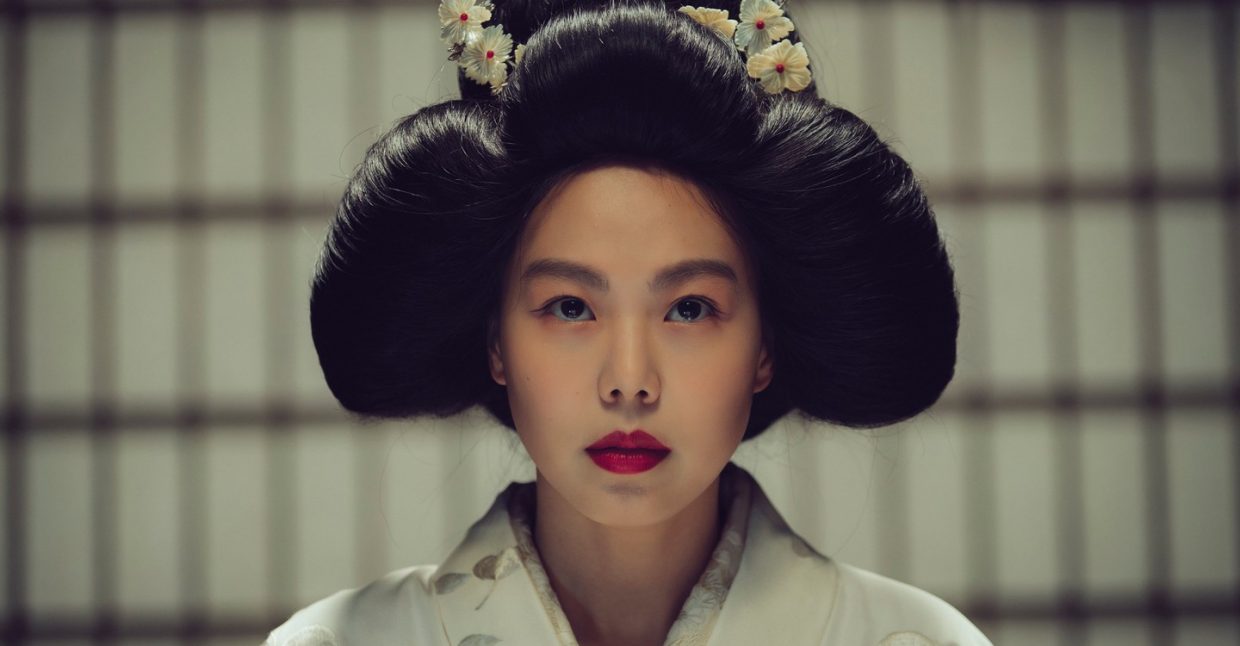
The Handmaiden (2016)
Based on: Fingersmith by Sarah Waters (2002)
Park Chan-wook’s radical adaptation of Sarah Waters’s novel (by radical I mean he transmuted the action from Victorian-era Britain to 1930s colonial Korea, which was just as rigid and striated by class) was hands-down my favorite film of 2016, never mind my favorite adaptation of a novel. It starts slow, and quiet, which only makes what eventually unfurls—involving an elaborate, multi-faceted con, a torture chamber, a lesbian awakening, a library of porn, and an octopus—that much more striking. Every moment of this film, which is both a love story and a thriller, is gorgeous, and hypnotic, and sexy, and weird as hell. It is beyond good.
And though I know we’re not supposed to be considering the adaptation process, this one was remarkable: it improved upon a book that I already loved. As I wrote back in 2016, the film “excised everything I didn’t like about the book (an over-complicated, fairly slow third act, for one thing) and replaced it with what I really wished for—the collaboration between these two strange, powerful women. The experience of watching the film reminded me of reading contemporary retellings of fairy tales—it’s a deeply satisfying wish-fulfillment that takes something already good and vital and twists it until it’s unbearably delicious, until it’s exactly what you want. This felt like a feminist reimagining of an already feminist novel.”
–Emily Temple, Senior Editor

Arrival (2016)
Based on: “Story of Your Life” by Ted Chiang (1998)
What if language was the key to knowledge, not only about your neighbor, but about strangers and yourself as well? By the end of Arrival, the Denis Villeneuve film based on Ted Chiang’s 1998 short story, “Story of Your Life,” the viewer understands this as the movie’s central question. Linguist Louise Banks (played by the ever-reliable Amy Adams) and physicist Ian Donnelly (Jeremy Renner) are called by the US Army to help study one of twelve extraterrestrial spacecrafts that have positioned themselves in scattered locations around the world. What Banks and Donnelly discover aboard the craft are two amorphous alien specimens, which they call “heptapods,” that communicate using a complicated system of logograms, or written characters that represent a word or phrase. This straightforward set-up lays the groundwork for a moving, and often anxiety-inducing, investigation of language, empathy, and miscommunication. Arrival’s surprising endgame cemented it as one of the most heartfelt movies of the last decade. The film’s meditative aesthetic is also boosted by a rather primal, ruminative score by the late, great Icelandic composer Jóhann Jóhannsson. –Aaron Robertson, Assistant Editor

Call Me By Your Name (2017)
Based on: Call Me By Your Name by André Aciman (2007)
André Aciman, author of Call Me By Your Name, initially thought he would dislike director Luca Guadagnino’s adaptation; from the moment he arrived on a visit to the set, he wrote for Vanity Fair, it was clear that Guadagnino’s vision for the film was significantly different from the one that had driven his own writing. But the final result, which he saw at the Berlin International Film Festival, and in particular the film’s infamous last shot, floored him. “The ending captured the very spirit of the novel I had written in ways that I could never have imagined or anticipated,” he wrote.
In Guadagnino’s hands, Aciman’s narration of the interior, obsessive Elio, a prodigious 17-year-old, becomes a series of languid Italian summer days over which a love story unfolds between him and Oliver, the older graduate student who comes to stay in their family’s house over the summer. Filmed in the Lombardy region of Italy, the film is so visually lush as to seem unreal, and the intensity of the connection it explores—and all the self-searching that follows it—is almost painful to watch, as Timothée Chalamet (Elio) and Armie Hammer (Oliver) bring a palpable chemistry and sense of constant, unresolved desire to their roles. Its setting, “Somewhere in Northern Italy,” is deliberately vague, Anthony Lane noted for The New Yorker—”the point of a paradise is that it could exist anywhere but that, once you reach the place, it brims with details so precise in their intensity that you never forget them,” he wrote. This film is a paradise worth your time and definitely one of the best adaptations of the last decade.
–Corinne Segal, Senior Editor
***
Dissenting Opinions
The following adaptations were just barely nudged out of the top twenty, but we (or at least one of us) couldn’t let them pass without comment.
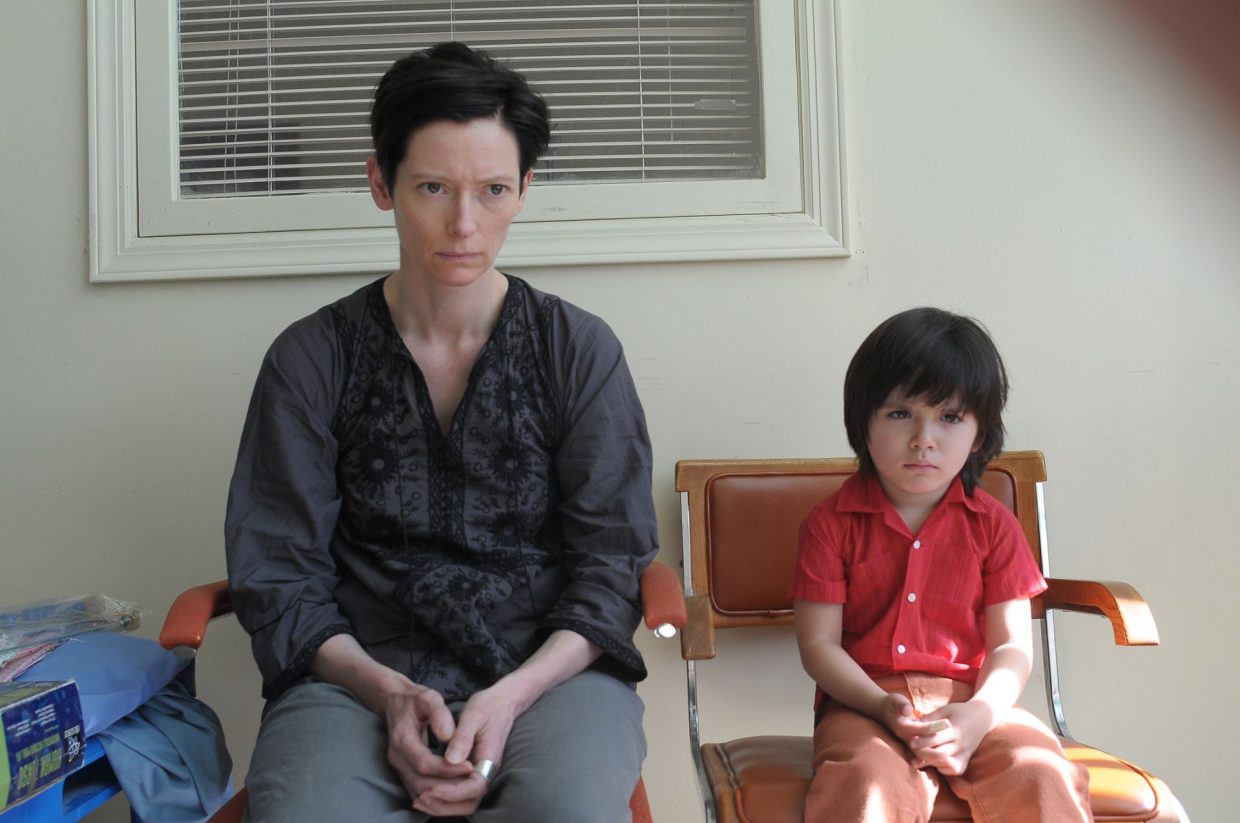
We Need to Talk About Kevin (2011)
Based on: We Need to Talk About Kevin by Lionel Shriver (2003)
What happens when someone you love turns out to be a monster? We Need to Talk About Kevin (WNTTAK) understands the complexities of love, grief, anger, and mourning intimately. Based on Lionel Shriver’s 2005 novel of the same name, the film has quickly surpassed its source material in both reach and reputation. Told from the perspective of Kevin’s mother, played to intense perfection by Tilda Swinton, WNTTAK begins with a lonesome Tilda, living in a rundown house and visiting her teenage son in prison. He’s done something terrible, something so terrible that Swinton’s neighbors no longer talk to her, but what? A gradual series of flashback sequences reveals Kevin’s difficult upbringing, his mother’s growing suspicion of his psychopathy, and finally, the explosive violence that lands him in prison in the first place.
If you prefer to end every film with the sensation that everything is pointless and we might just as well curl up in the fetal position and die (but also love exists and is very creepy), then this film is for you! It’s also part of a continuum of complex attitudes towards motherhood stretching back to Doris Lessing’s The Fifth Child and beyond. Motherhood is ambiguous. So is love. And so is that ending. . .
–Molly Odintz, CrimeReads Associate Editor
Cloud Atlas . . . but only the trailer (2012)
Based on: Cloud Atlas by David Mitchell (2004)
The trailer for the film Cloud Atlas, directed by the Wachowski sisters, is the single most moving work of cinema ever made. It is basically as long as a real movie (a 5 minute and 42 second-long movie trailer!) and it is more enjoyable than watching the actual whole film of Cloud Atlas, an extremely ambitious and staggering epic that tells a giant six-generation, cross-continental, time-jumping narrative packed with very famous movie stars (though are they performing as people of other races, at times? Yes. Yes they are.) The novel on which the film is based, which was written by David Mitchell, is a beautiful, complicated tale of different individuals at different moments in time, from an 19th-century voyager in the Pacific, to an impoverished family in a futuristic primitive world. Mitchell’s book is subtle and the connections between the six different stories within are more like soft threads. The film on the whole transforms the book in a somewhat awkward literalization of many of its smaller details (the movie becomes all about reincarnation in a way the book only touches upon it)… but this movie trailer, which can’t tell the full story of the movie (though it kind of tries, with its expanse), is a collection of stunning notes, coming together much more smoothly and (helpfully) vaguely than in its full iteration. You go watch this trailer, with its perfect deployment of that one M83 song and snare drums and lonely piano themes and stunning colors and heartbeat-matching montage cut points and slow motion and Jim Broadbent and gravelly voiceovers like “I believe there is another world out there, a better world—and I’ll be waiting for you there” and you TELL me that it does not deserve to win the Academy Award for Best Picture. You look me eye and tell me.
–Olivia Rutigliano, CrimeReads Editorial Fellow
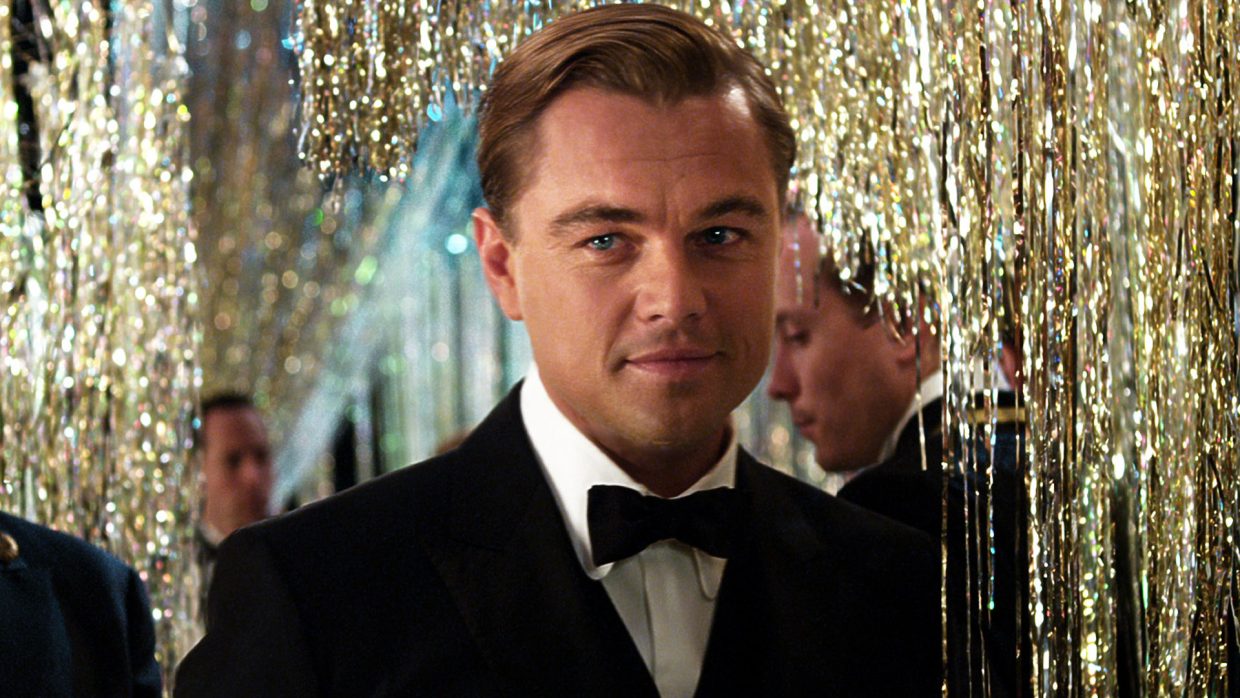
The Great Gatsby (2013)
Based on: The Great Gatsby, by F. Scott Fitzgerald (1925)
Here are just a few of the (myriad) reasons why Baz Luhrmann’s 2013 lush-as-fuck and much-maligned adaptation of F. Scott Fitzgerald’s magnum opus is actually one of the great cinematic achievements of the 21st century: (i) The trailer. Remember how excited we all were when this dope trailer dropped? Remember how alive it made us feel? (ii) The soundtrack: Beyoncé and André 3000 covering Back to Black, Jack White covering Love is Blindnessand, most especially, that young and beautiful Lana del Rey song (which I still listen to on the regular on my runs) Luhrmann pipes in over this glorious montage of Nick and Daisy hitting golf balls into the ocean and flinging beautiful silk shirts around the room. (iii) The party scenes. Just look at them all there, having a grand old time with their money and their sparkly clothes. (iv) The casting of Jason Clarke and Isla Fisher as George and Myrtle Wilson. Dead on. (v) The way DiCaprio’s Gatsby says the line “I’m certainly glad to see you, as well.” So intense. DiCaprio, the boyishly handsome rhino and Millennial/Gen Z model enthusiast who has spent a decade in roles that require him to look perennially on the brink of a complete mental breakdown, was born to play this role and I will brook no argument there (vi) Joel Edgerton absolutely going for it as Tom Buchanan. Not since Billy Zane’s Cal Hockley I enjoyed a wealthy shittheel villain so much. (vii) The way the movie wisely tones down the anti-Semitic Meyer Wolfsheim caricature. Good note, Baz. Good note. (viii) That Leo-raising-a-champagne-glass gif we all know and love. (ix) The way Tobey Maguire’s Nick Carraway adds that flourish to his sanatorium framing device novel at the movie’s close. All movie codas should be as bold in their purist-trolling as this.
–Dan Sheehan, Book Marks Editor
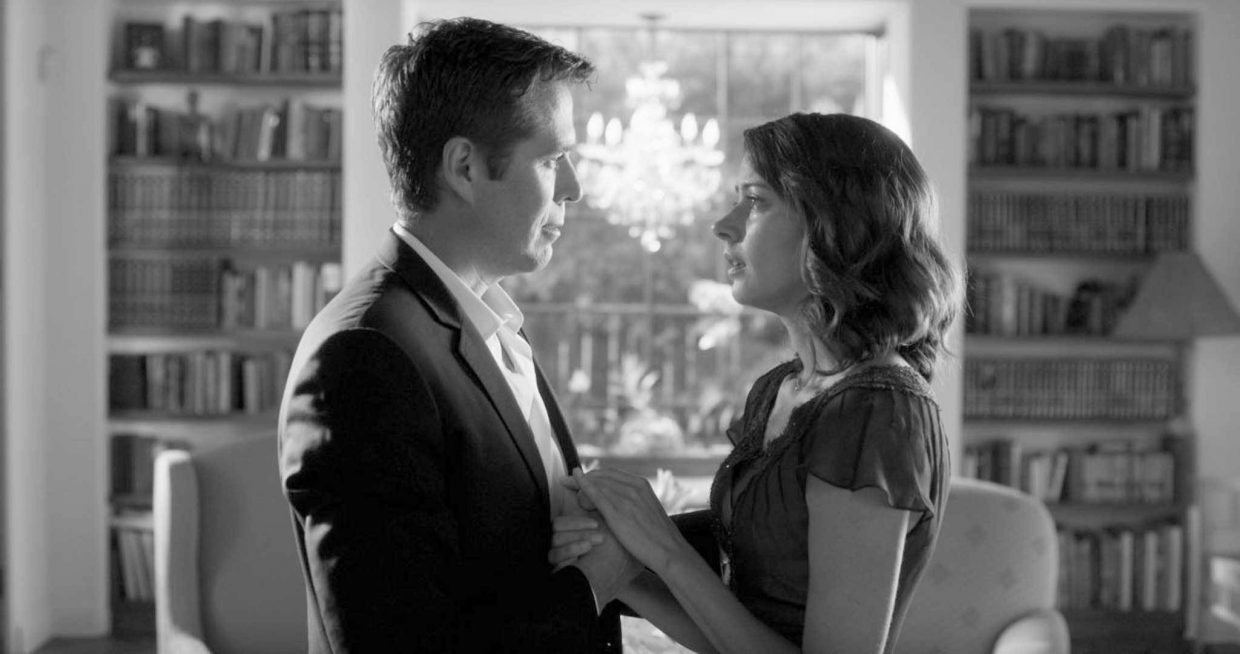
Much Ado About Nothing (2013)
Based on: Much Ado About Nothing, by William Shakespeare (1623)
Certain people in the office groaned when I announced that I wanted to write about this film, but those people are foolish. Look, no one would claim that this Much Ado About Nothing, directed by Joss Whedon and staged in his own house, is better than the official Much Ado About Nothing, directed by Kenneth Branagh in the ’90s (two more groan-worthy things), but it’s certainly more elegant, and hey, it’s the same play (my favorite). You can’t really mess up this play, which contains the best character in Shakespeare’s oeuvre—or maybe I’d give Beatrice and Puck a shared top billing, but the point stands. Perhaps most importantly, if you are a fan of other works created by Joss Whedon, ahem, this movie can be understood as an extended piece of fan fiction in which Wesley and Fred finally get together instead of the latter dying tragically in the former’s arms before they’ve even slept together. I mean, look at them, up there. Trust me when I say it’s very satisfying.
–Emily Temple, Senior Editor

Snowpiercer (2013)
Based on: Le Transperceneige by Jacques Lob, Benjamin Legrand and Jean-Marc Rochette
Snowpiercer!!!!!! It’s so good, y’all.
Snowpiercer is a 2013 Korean-American production directed by indie darling Bong Joon-ho and based on the French graphic novel Le Transperceneige by Jacques Lob with a striking (get-it?) premise. In an apocalyptic scenario where the world has become too frozen to sustain human life, the only survivors are on board a train called Snowpiercer, barreling around the world just fast enough to preserve the lives of those onboard – but all survivors are not equal. We begin the narrative in the “third class” section of the apocalypse, as we learn about the train’s highly stratified class system, held in place by a rigidly applied system of barbaric punishment administered by a terrifying Tilda Swinton.
The oppressed masses soon begin a rebellion against their fur-clad overlords, and as they journey from the back of the train through gradually increasing opulence, fighting their way to the engine car, audiences are forced to question if this kind of survival is worth surviving at all. Snowpiercer also gets mad props most creative/prolific arm removal – like, five characters get their arms cut off this movie. Each in a different way. Something to know ahead of time, especially if you’re planning a drinking game around it.
A perfect action film with a solid Marxist message that draws strong visuals from its comic book origins and takes narrative inspiration from video games, Snowpiercer is one of the must-see films of the decade.
–Molly Odintz, CrimeReads Associate Editor
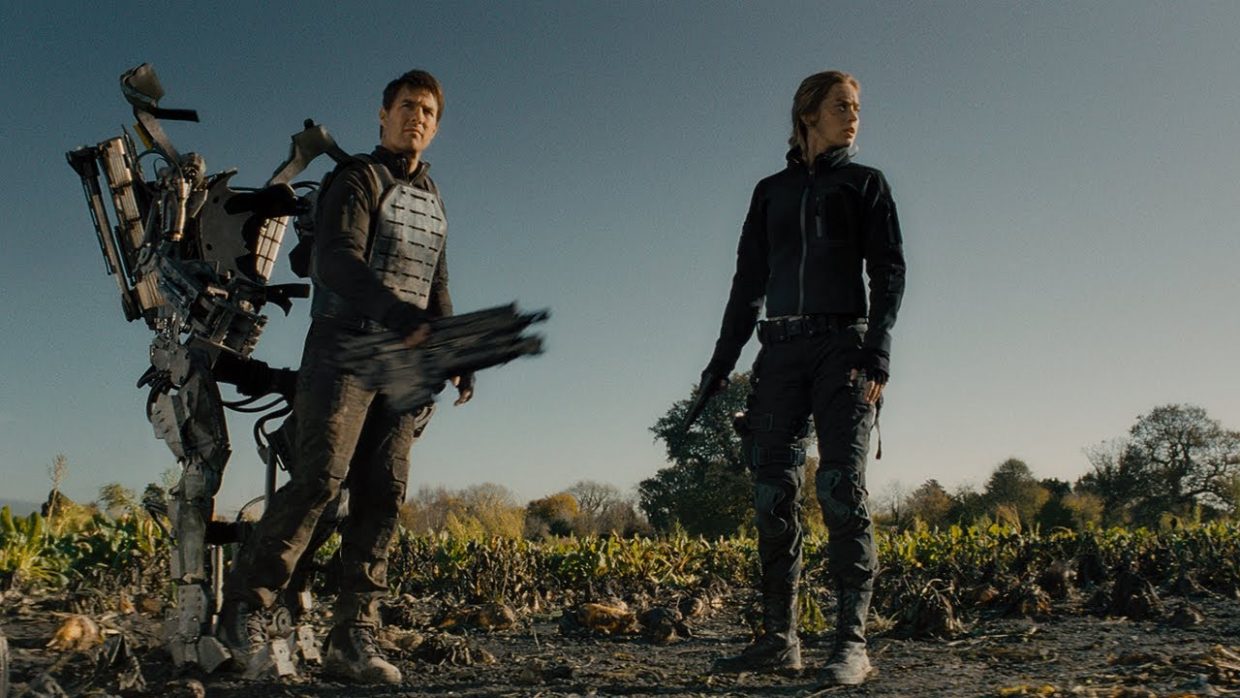
The Edge of Tomorrow (2014)
Based on: Hiroshi Sakurazaka, All You Need Is Kill (2004)
The 2014 Tom Cruise sci-fi actioner The Edge of Tomorrow AKA Live Die Repeat is adapted from Hiroshi Sakurazaka’s light novel, All You Need Is Kill, but perhaps the true ur-text is the 1993 Harold Ramis/Bill Murray classic Groundhog Day. What’s it about? Well, the plot is almost beside the point; its the premise here that’s everything: it’s the near future, and aliens have invaded Europe, and Cruise—a combat-unready military PR sleazeball—is dragooned by Brendan Gleeson into active duty for a D-Day style invasion, where he is almost instantly killed only to awaken the day before with his memory intact and forced to live through the slaughter again and again and again. Until, that is, with the help of badass warrior Emily Blunt, he learns to become a mechanized-bodysuit-fighting master and to better understand his enemy and, maybe, himself? I know, but it’s incredibly satisfying. There’s just so much glee to be had in the bonkersness and boldfaced derivativeness of the conceit, the video-game action sequences and the scenery-chewing supporting performances—and, of course, in watching Cruise (as the type of smarmy bastard that usually gets described as “playing against type” but always seems to suit him best) get 86-ed over and over. To watch this movie is to appreciate how little so many of its genre-mates are able to enjoy themselves, and how little they seem interested in your enjoyment. The Edge of Tomorrow, above all else, knows what I need to enjoy myself, and it wants me to have it.
–Emily Firetog, Deputy Editor
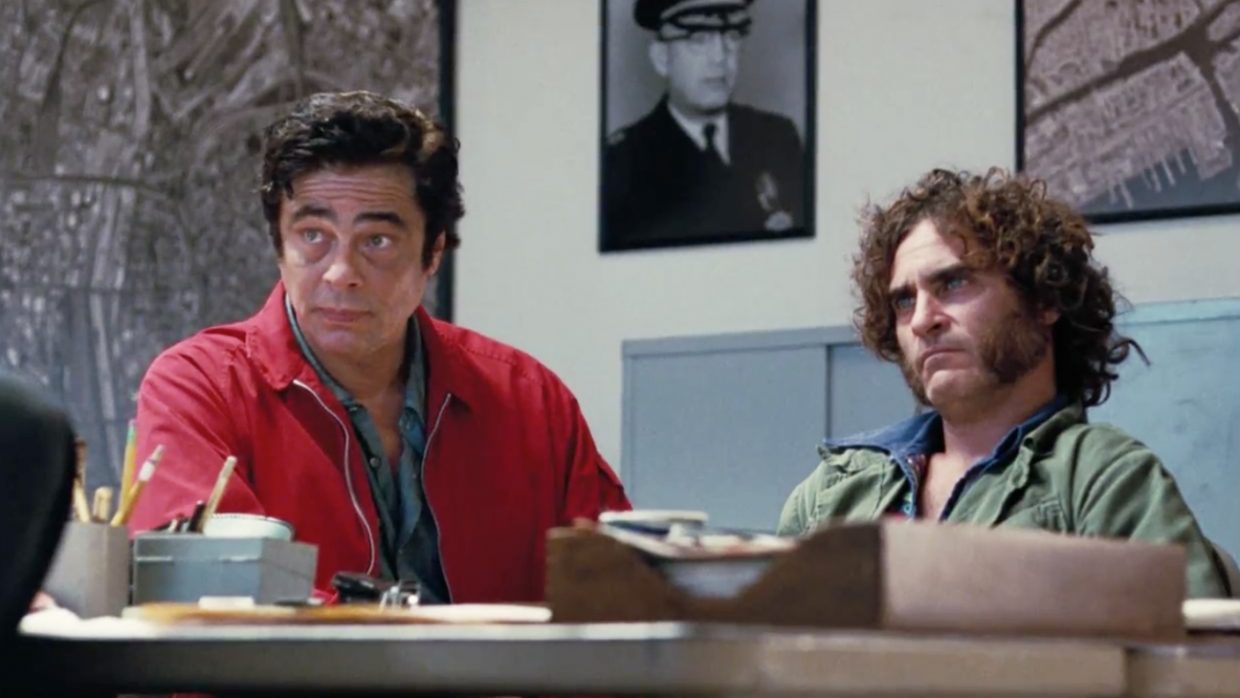
Inherent Vice (2014)
Based on: Inherent Vice by Thomas Pynchon (2009)
The reputation of Paul Thomas Anderson’s 2014 adaptation of Pynchon’s gonzo-PI novel has been growing fairly steadily since its first release, when, let’s be honest, it was hard to know exactly what to make of this thing. First off, like just about any PI story worth its salt, the “plot” doesn’t really make a whole lot of sense. Sense isn’t the point. (See, e.g. The Long Goodbye, book and movie; rinse, repeat.) Atmosphere is the point—an ambiance, some style, a little confusion, a little tension, and in this case a fine, drug-laced balancing act somewhere between ennui and paranoia, a certain feeling in the air that went hand-in-glove with the mourning of a decade’s promise, innocence lost, friends disappeared, dead and gone. Based on the 2009 Pynchon neo-noir, Inherent Vice is set in 1970s “Gordita Beach”—a stand-in for Manhattan Beach in its scruffy bohemian heyday—and follows the dubious private eye casework of one Doc Sportello, a man capable of walking the city’s mean streets in the mode of Chandler’s Marlowe, though in this case the streets are full of 1960s washouts and burnouts, and the bete noir is one Bigfoot Bjornsen, the LAPD’s local fascist hippie-hater. That’s a fairly ineffable mood but Paul Thomas Anderson manages to capture it along with some help from Joaquin Phoenix, Katherine Waterston, Josh Brolin, Benicio Del Toro and a long, strange cast of characters. What starts out seeming to be an exercise in oddness and unexpected detour slowly, almost inexplicably morphs into something far more tender and poignant, a weird, lovely meditation on the people and scenes that move in and out of our lives, gone forever.
–Dwyer Murphy, CrimeReads Managing Editor
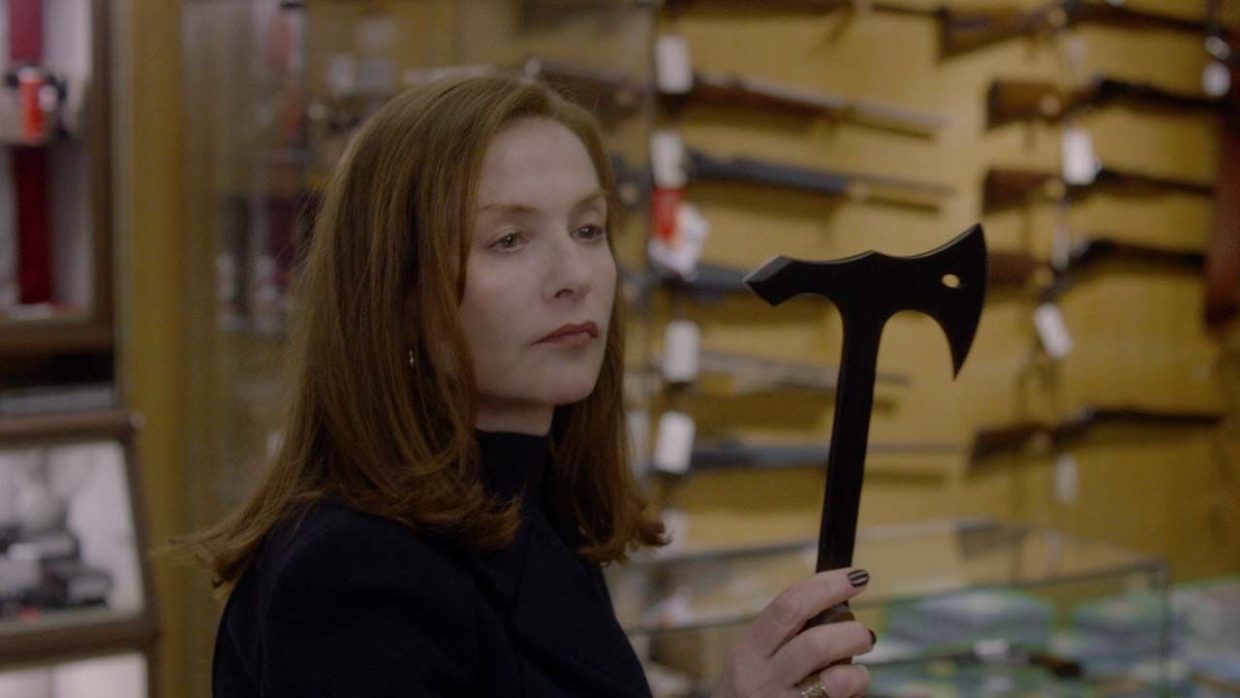
Elle (2016)
Based on: Oh… by Philippe Djian
Elleis a brilliant, disturbing movie that I will not watch again. Isabelle Huppert plays Michèle Leblanc, the artistic director of a video game company, who is one day raped in her home by a masked assailant. After the assault, Michèle does not call the police but instead cleans up the blood and broken glass, and resumes her life. One might list Elle among a long list of “rape revenge” movies, as many critics have, though it was immediately clear that the film was attempting something much bolder than the usual fare. The fact that director Paul Verhoeven wasn’t able to convince American actresses or film studios to make the film says something about the ugly frankness of Elle’s Machiavellian attempts to rebuild her life and self-image after such a heinous violation. Elle, which was released in 2016, the year before the #MeToo movement spiked in popularity, was an inadvertent bellwether of soon-to-be-revived debates around male and female power, sex, and sexual ethics. –Aaron Robertson, Assistant Editor
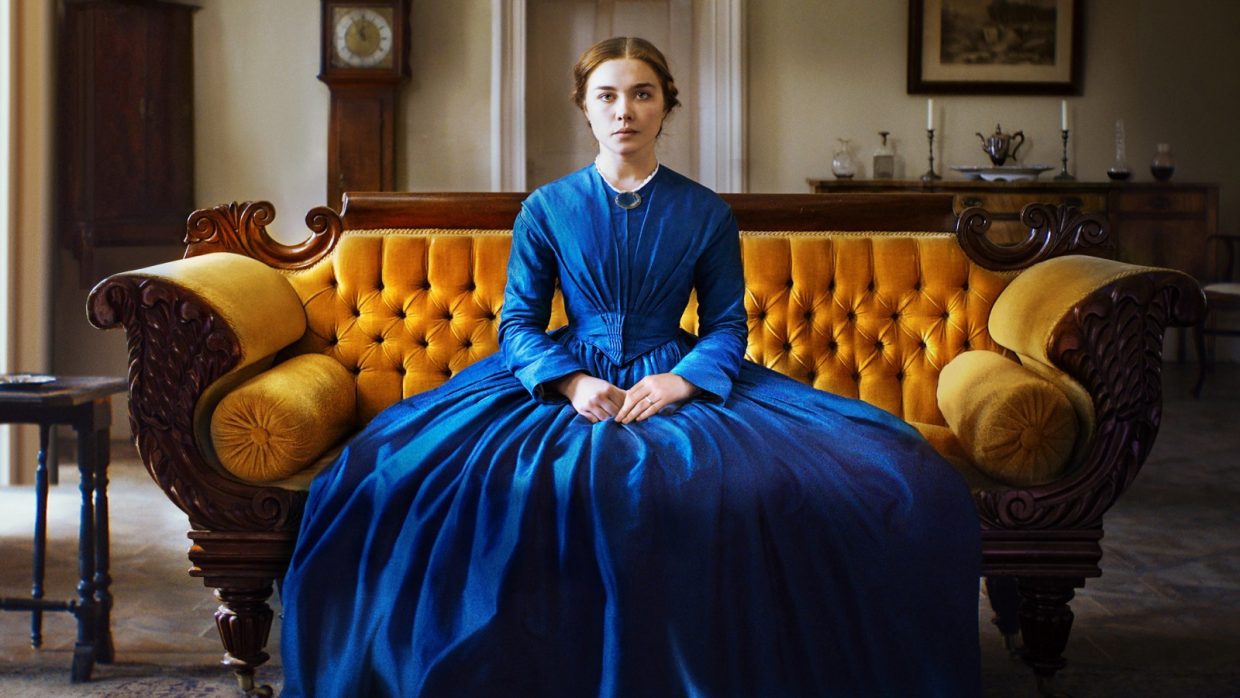
Lady Macbeth (2017)
Based on: Lady Macbeth of the Mtsensk District by Nikolai Leskov (1865)
Has there ever been a protagonist more terrifying than Katherine, the Lady Macbeth of William Oldroyd’s haunting adaptation of Leskov’s novella (itself inspired by Shakespeare’s most famous female character)? Sure, a lot of characters are cold, and a lot of characters start with one little murder and then work their way up in intensity (of method and victim), but as I’ve written in this space before, most of them don’t, well, win at the end, and most of them aren’t played by Florence Pugh, who nails Katherine as a blank, amoral antiheroine in a fairy tale—one of the original fairy tales, where people routinely die, disappear and get dismembered—who suffers, more than anything else, from idle hands. It’s a shame more people didn’t see this film, despite its disturbing imagery; any lovers of Ottessa Moshfegh and Catherine Lacey and yes, the Bard himself, should seek it out.
–Emily Temple, Senior Editor
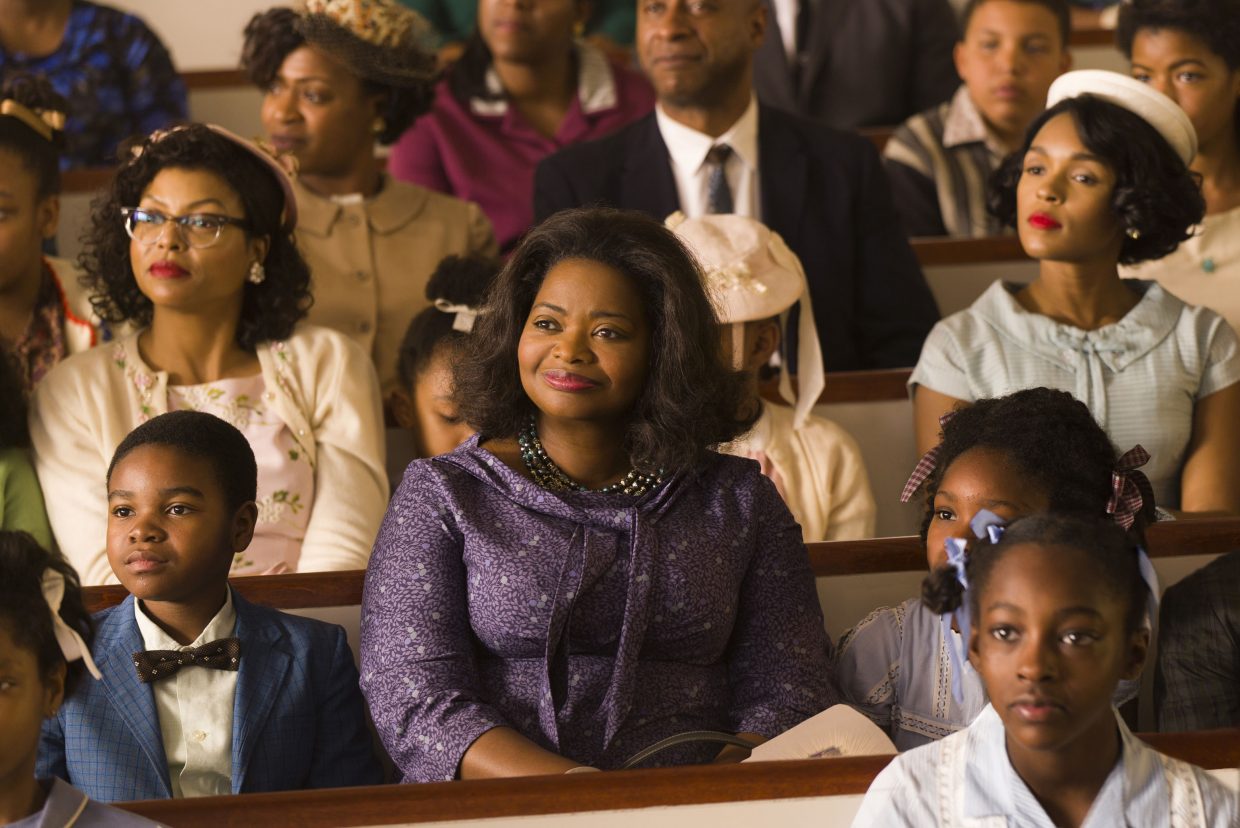
Hidden Figures (2018)
Based on: Hidden Figures by Margot Lee Shetterly (2016)
Based on Margot Lee Shetterly’s bestselling nonfiction book of the same name, Hidden Figures tells the little-known story of Katherine G. Johnson, Dorothy Vaughan, and Mary Jackson—the brilliant black women who were behind one of NASA’s greatest achievements. (Had you heard of them before this? I certainly hadn’t.) Without these women breaking down barriers and fighting for a seat at the table, astronaut John Glenn never would have been successfully launched into orbit. Taraji P. Henson, Octavia Spencer, and Janelle Monáe do an incredible job of bringing these women to the forefront of this Space Race story. There is one scene that has stuck in my mind, years after I’ve seen it. Because segregated bathrooms are still in place at NASA when the events of this film unfold, we see Taraji P. Henson running across the campus grounds, crossing a great distance to go to the “colored bathroom.” At first, it’s almost played up for a little bit of comic relief. But as it goes on, we see the toll it takes on her work. Then her white male supervisor berates her in front of her colleagues for leaving her desk for so long, and she finally fires back telling them where she’s been going for forty minutes at a time, screaming that this is something they would never even have to consider. It’s a real turning point in the movie, a cleverly included detail that hits on a terrible reality of the time. But Hidden Figures doesn’t hit you over the head with it. It doesn’t linger in this injustice. The movie is also filled with joy and laughter and small victories and strong female friendship. The story itself is heartwarming and inspiring, and the film adaptation is a fitting celebration of these game-changing women.
–Katie Yee, Book Marks Assistant Editor

Can You Ever Forgive Me? (2018)
Based on: Can You Ever Forgive Me? by Lee Israel
I find it very comforting to watch characters act out of desperation and that’s not something I intend to examine at all! Even if you don’t share my totally unremarkably interest in downward spirals, Can You Ever Forgive Me? is worth watching. Adapted from Lee Israel’s memoir of the same name, the film is part buddy comedy (Melissa McCarthy and Richard E. Grant play Israel and her friend/partner in crime Jack Hock), part heist, and all spiny dark comedy. It’s also, as A.O. Scott writes, “catnip for the bookish,” as the crime in question is selling forged correspondence from literary giants including Dorothy Parker and Noël Coward. One of the things I love about the film is that while it certainly doesn’t glamorize Israel’s crime spree (she forged 400 letters, which I think qualifies as a spree), it does respect her talent as a mimic. The script—written by Jeff Whitty and the brilliant Nicole Holofcener—is funny and mean and very, very tense, and Melissa McCarthy’s Lee Israel is one of my favorite Unlikeable Women of the decade.
–Jessie Gaynor, Social Media Editor
***
Honorable Mentions
A selection of other adaptations that we seriously considered for both lists—just to be extra about it (and because decisions are hard).
127 Hours (2010) · The Girl With the Dragon Tattoo (2011) · Moneyball (2011) · Harry Potter and the Deathly Hallows (Part 1) (2011) · Jane Eyre (2011) · Anna Karenina (2012) · Cloud Atlas itself (2012) · The Perks of Being a Wallflower (2012) · Cosmopolis (2012) · Under the Skin (2013) · Blue is the Warmest Color (2013) · The Secret Life of Walter Mitty (2013) · Divergent (2014) · Room (2015) · The Diary of a Teenage Girl (2015) · The Martian (2015) · Still Alice (2015) · Spotlight (2015) · The Lost City of Z (2016) · If Beale Street Could Talk (2018) · Blackkklansman (2018) · We the Animals (2018) · The Sisters Brothers (2018) · The Wife (2018).
Emily Temple
Emily Temple is the managing editor at Lit Hub. Her first novel, The Lightness, was published by William Morrow/HarperCollins in June 2020. You can buy it here.












